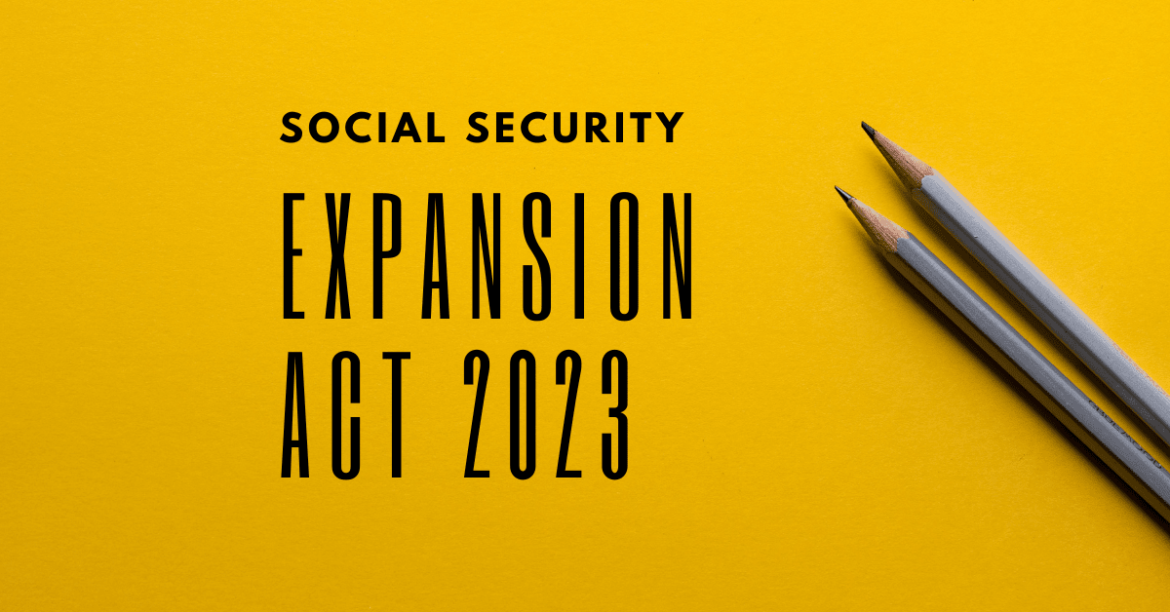Social Security is a federal program in the United States that provides retirement, disability, and survivor benefits to eligible individuals. The program was first established in 1935 and has since become a critical source of income for millions of Americans. According to reports, almost 40% of older adults rely on Social Security for most of their income.
As the population ages and the cost of living continues to rise, many policymakers and advocates have called for expanding the Social Security program. In this blog, we will be exploring the key provisions of the Social Security Expansion Act 2023, the possible time of going into effect, and the potential impact of the act on beneficiaries.
What is the social security expansion act 2023?
The Social Security Expansion Act 2023 includes a provision that would give people turning 62 in 2023 an extra $200 in each monthly ($2400 extra per year) check. The details of the bill may vary depending on the specific version that is introduced and any amendments that are made. However, the act does aim to increase benefits for current beneficiaries and increase the minimum benefit for low-income workers, as well as improve the cost-of-living adjustment formula.
Key facts about Social Security Expansion Act 2023
Here are some key facts about the Social Security Expansion Act 2023:
- Currently, Social Security has a $2.85 trillion surplus fund.
- The legislation would lift the earnings cap on Social Security taxes for all income exceeding $250,000.
- All current and existing beneficiaries will receive $2400 extra benefits every year.
- The net investment income tax will go up by 12.4 percent for certain businesses.
- Will increase the Special Minimum Benefit level, equaling 125% of the poverty line.
- Restoring student benefits (up to age 22) for the children of disabled or deceased workers.
- The Disability Insurance Trust Fund and Old Age and Survivors Trust Fund will be merged.
When will the Social Security Expansion Act go into effect?
From January 1, 2024, the Social Security Expansion Act 2023 will become effective and will apply to the monthly insurance benefits that are paid under Title II of the Social Security Act (42 U.S.C. 401 et seq.) for months in calendar years that start on or after that date.
Potential impact of the act on beneficiaries
The impact of the Social Security Expansion Act would depend on the details of the legislation, its implementation, and the broader economic and political context. However, here are some of the potential effects of the act:
1. Increased benefits
One potential impact of a Social Security Expansion Act is an increase in benefits for beneficiaries. This could involve raising the monthly benefit payments received by retirees, disabled individuals, or surviving spouses and dependents. Higher benefit levels can help improve the financial security and well-being of beneficiaries.
2. Adjustments for inflation
Cost-of-living adjustments (COLAs) are designed to ensure that Social Security benefits keep pace with inflation. An expansion act might include provisions for more generous (8.7%), COLAs, which would help protect beneficiaries’ purchasing power over time.
3. Expanded eligibility
Some expansion acts may broaden the eligibility criteria for Social Security benefits. This could involve lowering the age at which individuals can start receiving retirement benefits or extending coverage to additional groups, such as workers in certain occupations or students.
4. Financial sustainability
It’s important to consider the financial insinuations of any expansion act. Social Security is funded through payroll taxes, and expanding the program could require adjustments to funding mechanisms or overall financial sustainability.
Social Security and 2024 US presidential election
Few recent surveys have revealed that a staggering 79% of Americans believe the Social Security system needs to be overhauled. With many older Americans relying on Social Security as a necessity, it’s no surprise that 72% of adults are worried that the system will run out of funding in their lifetime. In fact, 23% believe they won’t see any benefits from Social Security at all.
The surveys also found that the candidate’s stance on Social Security will be a major factor in the 2024 presidential election, with many Americans supporting changes such as increasing the minimum eligibility age, increasing the payroll tax rate, and removing the cap on Social Security taxes for high-income earners.
Moreover, 87% of Americans want action to address the Social Security trust fund shortfall, and 69% say a candidate’s stance on Social Security will influence their vote. The Social Security trust fund is projected to run out in 2035, and Medicare’s hospital insurance fund is projected to be depleted in 2036.
Presidential candidates have different approaches to addressing the issue, with some proposing tax increases, benefit cuts, or a combination of both. Former presidential candidate Biden had vowed to protect Social Security and Medicare, while former President Trump wants to eliminate some Social Security taxes. New Democratic presidential candidate Kamala Harris opposes benefit cuts and has proposed raising taxes on the wealthy to fund Social Security and Medicare.
The key points from recent reports related to Social Security 2024 and the upcoming US election:
- 79% of Americans believe the Social Security system needs to be overhauled
- 72% of adults are worried that Social Security will run out of funding in their lifetime
- 23% believe they won’t see any benefits from Social Security at all
- 87% of Americans want action to address the Social Security trust fund shortfall
- 69% say a candidate’s stance on Social Security will influence their vote
- The Social Security trust fund is projected to run out in 2035
- Medicare’s hospital insurance fund is projected to be depleted in 2036
- Presidential candidates have different approaches to addressing the issue, including tax increases, benefit cuts, or a combination of both
It’s evident that Social Security and Medicare reform will be a critical issue in the 2024 presidential election. With so many Americans relying on these programs, it’s essential that candidates take a thoughtful and comprehensive approach to addressing the shortfalls.
3-points summary
- The Social Security Expansion Act 2023 is expected to go into effect from January 1st, 2024.
- It is expected to result in $2400 extra benefits per year for beneficiaries and an increase in taxes for incomes exceeding $250K.
- Social security is expected to take center stage at the US elections in November 2024.
Final thoughts
In conclusion, the Social Security Expansion Act of 2023 represents a pivotal moment in our nation’s commitment to supporting older Americans and ensuring their financial security. By expanding benefits, adjusting the cost-of-living adjustments, and increasing the minimum benefit, the Social Security Expansion Act seeks to provide a more dignified and secure retirement for our seniors.
We hope this blog has shed light on the significance of the Social Security Expansion Act of 2023 and the positive impact it can have on the lives of older Americans. By exploring its provisions and recognizing the importance of a strong social safety net, we can strive toward a more equitable and secure future for all.
FAQs
What is Cost-of-living adjustments (COLAs)?
Cost-of-living adjustments (COLAs) are increases in payment amounts given to people who receive certain benefits, like Social Security or federal pensions. The purpose of COLAs is to help people keep up with the rising cost of living and inflation such as increased food, housing, and healthcare costs. COLAs are meant to ensure that the purchasing power of these benefits remains relatively stable over time.
How much is Social Security?
The Social Security retirement benefit averaged around $1,782 per month till February 2023, totaling approximately $21,384 per year.

